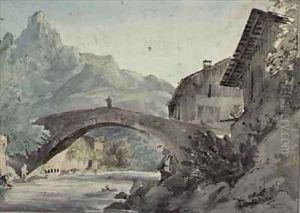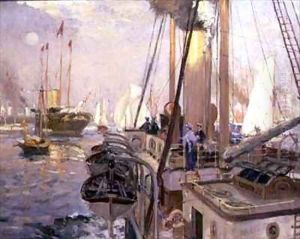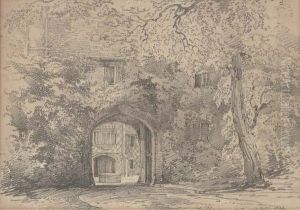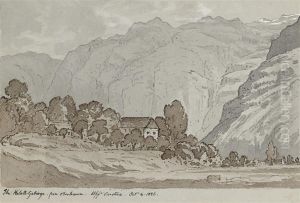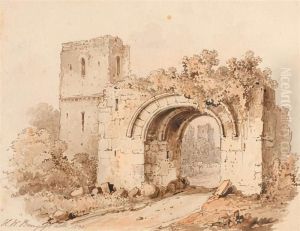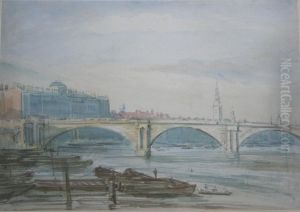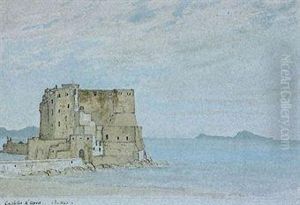Henry William Burgess Paintings
Henry William Burgess was a British artist known for his landscape paintings and watercolor artworks. Born in London in 1792, Burgess displayed an early talent for drawing and painting. He was the son of William Burgess, a noted painter who specialized in theatrical scenery. Influenced by his father's work, Henry William Burgess developed a keen interest in capturing the natural world.
During his career, Burgess exhibited his works at prestigious institutions such as the Royal Academy of Arts and the British Institution. His style was characterized by a delicate touch and attention to detail, which won him considerable acclaim during his lifetime. Burgess's landscapes often depicted the English countryside, with a particular focus on rural scenes and the changing seasons. These works were praised for their vivid portrayal of natural beauty and their ability to evoke a sense of tranquility.
Burgess was also known for his teaching; he authored a book titled 'Landscape Painting in Watercolours,' which was a practical guide for students of the medium. His influence extended through his students and the readers of his instructional materials.
Tragically, Henry William Burgess's life was cut short when he died in 1839 at the age of 47. Despite his relatively brief career, he left behind a legacy of beautiful artworks that continue to be appreciated by art historians and collectors alike. Burgess's contribution to the field of watercolor painting and his role in the development of British landscape art remain significant to this day.
